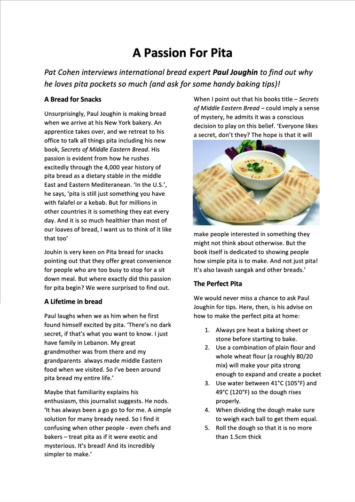The article should be written and worded like a magazine article would be, and should be formatted as such as well. See recommended software below.
If you create it within your primary Word assignment, use page breaks before and after the article. You can insert page breaks from the "Insert" menu, or by typing CTRL-ENTER in most software applications.

Here are some suggestions to enhance its magazine-article feel:
- Having a strong title for the article.
This should not be the question asked, but can be the question re-worded. For example, the question "Explain, with examples, how a consulting business would train a new employee", could be re-worded as "Training new employees, a strategy for consulting businesses". It is clear which question is being answered so the marker can find the correct content to mark, but it looks more like an article title.
Please include the question number, either in the title, or on the line above the title. - Introduction: Engaging Opener
Begin with a captivating anecdote, statistic, or quote related to globalization and operational management to grab the reader's attention. - Headings and Subheadings: Enhance Readability
Divide your content into distinct sections with clear headings and subheadings. This helps the reader navigate through the article more easily. - Formating:
Having the text of the article in 2 columns for magazines (1 for web articles), and using full justification instead of left justified (I know the example image to the right is left justified). - Tone: Conversational and Accessible
Make the language more conversational and accessible. Instead of academic phrases, use engaging language to connect with a broader audience. - Visual Elements: Add Images or Infographics
Consider incorporating relevant images, infographics, or charts to visually represent key concepts. This not only breaks up the text but also enhances understanding. - Case Studies: Bring Stories to Life
Elaborate on the case studies with vivid details. Describe specific examples of companies, their challenges, and how they navigated the complexities of globalization. Make it relatable to the reader. - Quotations: Include Expert Opinions
Integrate quotes from experts in the field, business leaders, or scholars to add credibility and provide a variety of perspectives. - Conclusion: Summarize and Inspire
Conclude with a brief summary of key points and leave the reader with a thought-provoking statement or a call to action.
These points will not magically turn any writing into a magazine article, but they will help.
Recommended software:
- Canva (free online)
- Adobe InDesign (complicated and expensive, but produces professional print-ready results)
- Popular word processors can be used:
- OpenOffice/LibreOffice Writer (free download Windows/Mac/Linux)
- Google Docs (free online)
- Microsoft Word
They should be fit for purpose in terms of content and visuals.
Submit as a separate file (.PDF, or popular image formats). If submitting as an image, copy the plain text into your Word document.